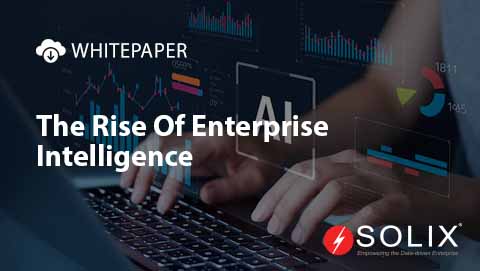Unlocking the Hidden Value: Calculating the ROI of Data Archiving
In the era of exponential data growth, enterprises are constantly grappling with the challenge of managing massive volumes of information. Data archiving, the practice of moving infrequently accessed data to a separate, less expensive storage system, is often seen as a necessary evil, a mere cost-saving measure. However, forward-thinking organizations are recognizing that data archiving can unlock a wealth of hidden value, delivering a substantial return on investment (ROI) that goes beyond mere storage costs.
This article delves into the multifaceted benefits of data archiving, providing a comprehensive framework for calculating ROI, measuring success, and building a compelling business case for investment.
The Case for Data Archiving: More Than Meets the Eye
Data archiving is not simply about reducing storage costs. It's a strategic initiative that can significantly impact an organization's bottom line, operational efficiency, and risk profile. Here's a breakdown of the key benefits:
- Cost Savings: By offloading infrequently accessed data to lower-cost storage tiers, organizations can drastically reduce their storage footprint and associated expenses. This includes savings on hardware, software licenses, energy consumption, and even data center space.
- Improved Performance: Archiving old data can declutter active systems, leading to faster query responses, improved application performance, and a more streamlined user experience.
- Enhanced Data Governance: Data archiving enables organizations to establish better data retention policies, ensuring compliance with regulatory requirements and reducing the risk of legal liabilities.
- Preserving Historical Data: Archived data retains its value for analysis, reporting, and historical reference. This can be invaluable for gaining insights into long-term trends, customer behavior, and operational efficiency.
Calculating the ROI of Data Archiving: A Holistic Approach
The ROI of data archiving encompasses both tangible and intangible benefits. To accurately assess its value, a comprehensive approach is required that considers all aspects of the investment:
-
Identifying Cost Savings:
- Storage Costs: Calculate the cost of storing data on primary storage versus archival storage. Factor in the volume of data to be archived and the projected growth rate.
- Hardware Costs: Assess potential savings on server hardware, network equipment, and backup infrastructure due to reduced data volumes on primary systems.
- Software Licensing: Evaluate any potential savings on software licenses (e.g., database licenses) based on reduced active data.
- Personnel Costs: Estimate the time and resources saved by IT staff due to reduced administrative overhead and improved system performance.
-
Quantifying Productivity Gains:
- Faster Search & Retrieval: Measure the time saved by employees in accessing relevant information due to improved search capabilities and faster query responses.
- Improved Decision-Making: Estimate the value of better decisions made possible by access to historical data and trend analysis.
- Reduced Downtime: Factor in the cost savings from reduced system downtime and improved application availability.
-
Estimating Risk Mitigation Benefits:
- Reduced Legal Liability: Calculate the potential cost savings from avoiding legal fines and penalties due to non-compliance with data retention regulations.
- Improved Compliance: Quantify the value of enhanced data governance and the ability to meet regulatory requirements.
- Data Loss Prevention: Factor in the potential costs of data loss and recovery, which can be mitigated through proper archiving.
-
Building a Business Case for Data Archiving:
- Summarize the findings: Combine all the cost savings, productivity gains, and risk mitigation benefits into a comprehensive ROI calculation.
- Present a compelling narrative: Clearly articulate the value proposition of data archiving, highlighting its impact on operational efficiency, cost reduction, risk management, and long-term data preservation.
- Get buy-in from stakeholders: Engage key decision-makers by demonstrating the financial and strategic benefits of data archiving.
Measuring the Success of Your Data Archiving Initiative
Once your data archiving solution is implemented, it's crucial to track its performance and measure the ROI over time. This involves:
-
Defining Key Performance Indicators (KPIs):
- Storage Cost Reduction: Track the reduction in storage costs over time.
- Retrieval Time: Measure the average time taken to retrieve archived data.
- Data Growth Rate: Monitor the growth of your archived data to ensure adequate capacity planning.
- User Satisfaction: Gather feedback from users on their experience with the archiving solution.
-
Tracking and Reporting on ROI:
- Regularly collect data on the KPIs and compare them to your initial ROI projections.
- Generate reports that clearly show the impact of data archiving on your organization's bottom line and operational efficiency.
-
Adjusting Your Strategy as Needed:
- Analyze the data to identify areas where you can further optimize your archiving strategy.
- Update your retention policies and archiving processes to ensure ongoing compliance and cost-effectiveness.
The Future of Data Archiving: Intelligent and Automated
As data volumes continue to explode, the role of data archiving will become increasingly critical. The future of data archiving lies in intelligent and automated solutions that leverage machine learning and AI to optimize data placement, tiering, and retrieval. By embracing data archiving as a strategic initiative and not just a cost-saving measure, organizations can unlock significant value from their data, reduce risks, and gain a competitive edge in the data-driven economy.
Related Resources
Explore related resources to gain deeper insights, helpful guides, and expert tips for your ongoing success.
-
-
White Paper
Enterprise Information Architecture for Gen AI and Machine Learning
Download White Paper -
-
Why SOLIXCloud
SOLIXCloud offers scalable, secure, and compliant cloud archiving that optimizes costs, boosts performance, and ensures data governance.
-
Common Data Platform
Unified archive for structured, unstructured and semi-structured data.
-
Reduce Risk
Policy driven archiving and data retention
-
Continuous Support
Solix offers world-class support from experts 24/7 to meet your data management needs.
-
On-demand AI
Elastic offering to scale storage and support with your project
-
Fully Managed
Software as-a-service offering
-
Secure & Compliant
Comprehensive Data Governance
-
Free to Start
Pay-as-you-go monthly subscription so you only purchase what you need.
-
End-User Friendly
End-user data access with flexibility for format options.











